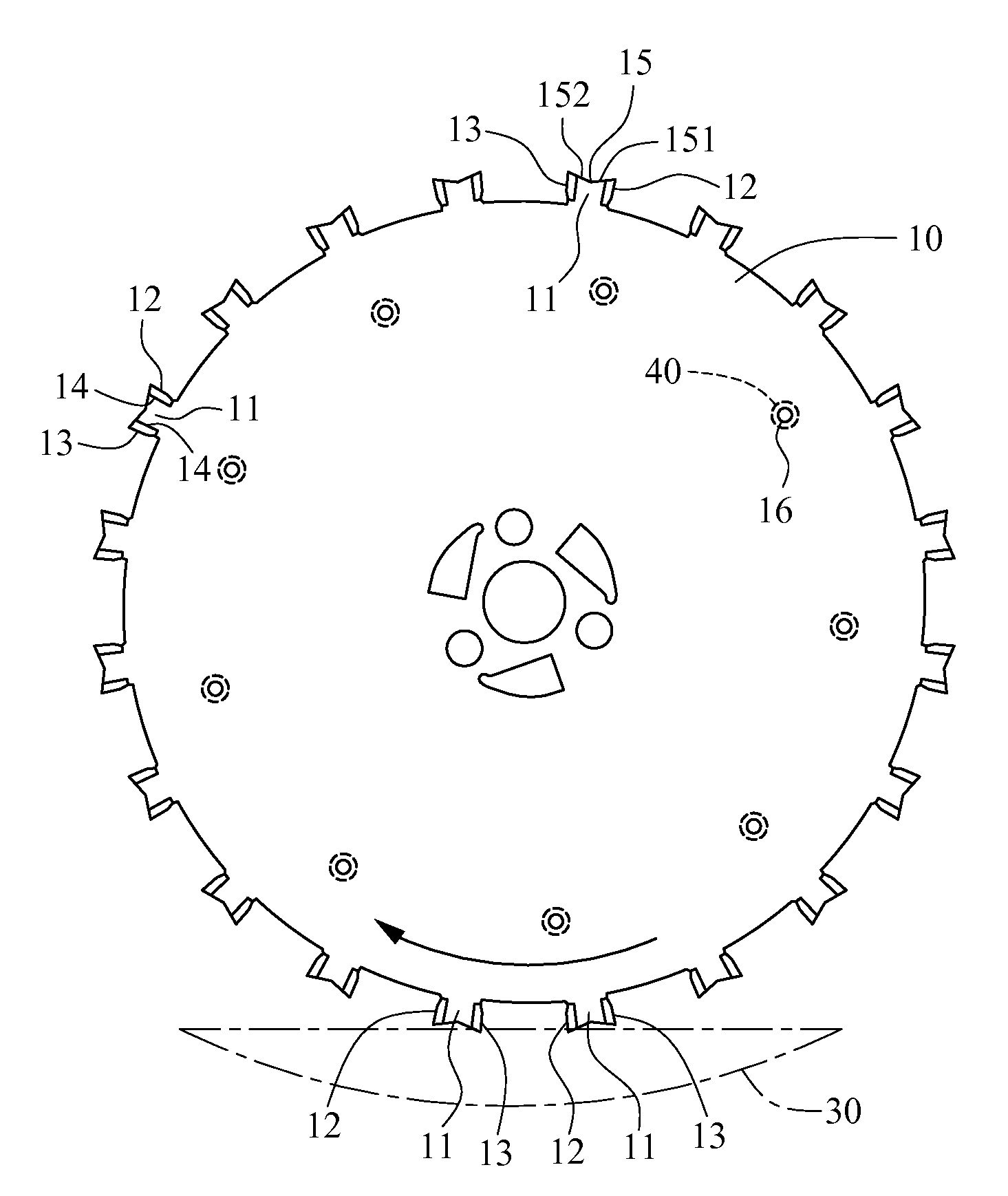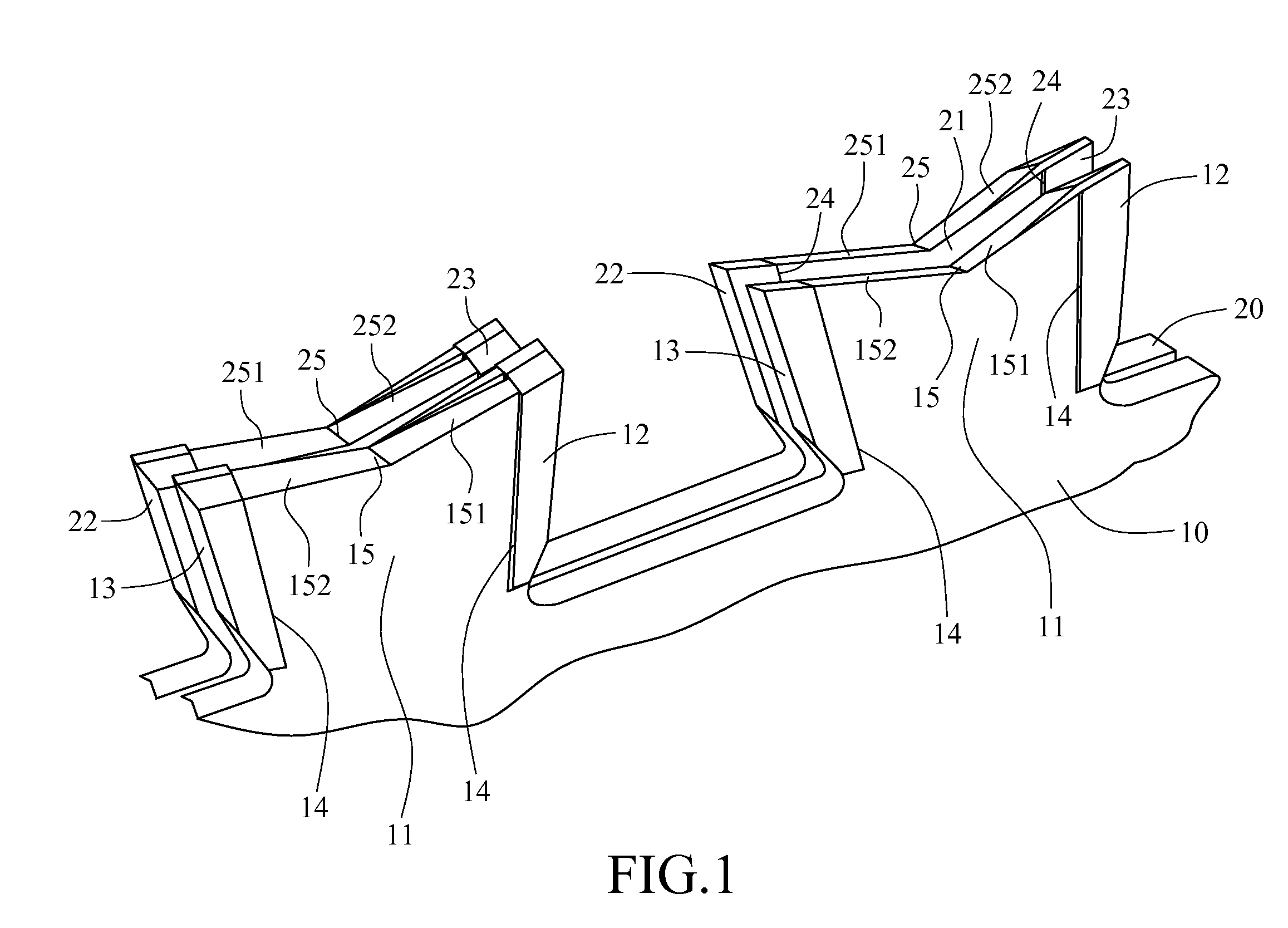Bi-directional cutting saw blade
a saw blade and bi-directional technology, applied in the direction of saw blades, metal sawing devices, manufacturing tools, etc., can solve the problems of cutting edges that are inevitably damaged, saw blades that are out of use and must be discarded, and saw blade body fabrication costs that are much higher than the saw teeth, so as to make a smooth cut
- Summary
- Abstract
- Description
- Claims
- Application Information
AI Technical Summary
Benefits of technology
Problems solved by technology
Method used
Image
Examples
Embodiment Construction
[0022]In view of the problem that a unidirectional cutting saw blade is discarded when cutting edges are worn out, thereby causing waste, the Applicant provides a bi-directional cutting saw blade, capable of prolonging the service life of the saw blade by 100% and providing a smooth cut surface of a workpiece and thus improving the cutting quality.
[0023]The bi-directional cutting saw blade disclosed in the present invention may be a pair of bi-directional cutting circular saw blades 10 and 20, as shown in FIG. 1. The pair of circular saw blades 10 and 20 is coaxially mountable on a cutting device (not shown), and moves in opposite directions and performs coaxial counter-cutting relative to each other. The cutting device is an electric saw in which two circular saw blades respectively performing forward rotation and reverse rotation may be assembled.
[0024]With reference to FIGS. 2 and 3, the pair of circular saw blades includes a first saw blade 10 and a second saw blade 20. The firs...
PUM
| Property | Measurement | Unit |
|---|---|---|
| obtuse angle | aaaaa | aaaaa |
| time | aaaaa | aaaaa |
| metallic property | aaaaa | aaaaa |
Abstract
Description
Claims
Application Information
 Login to View More
Login to View More - R&D
- Intellectual Property
- Life Sciences
- Materials
- Tech Scout
- Unparalleled Data Quality
- Higher Quality Content
- 60% Fewer Hallucinations
Browse by: Latest US Patents, China's latest patents, Technical Efficacy Thesaurus, Application Domain, Technology Topic, Popular Technical Reports.
© 2025 PatSnap. All rights reserved.Legal|Privacy policy|Modern Slavery Act Transparency Statement|Sitemap|About US| Contact US: help@patsnap.com



